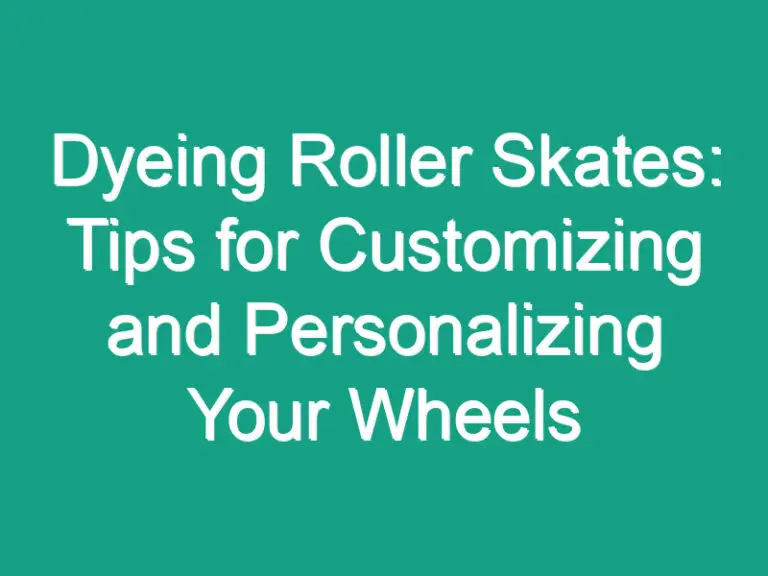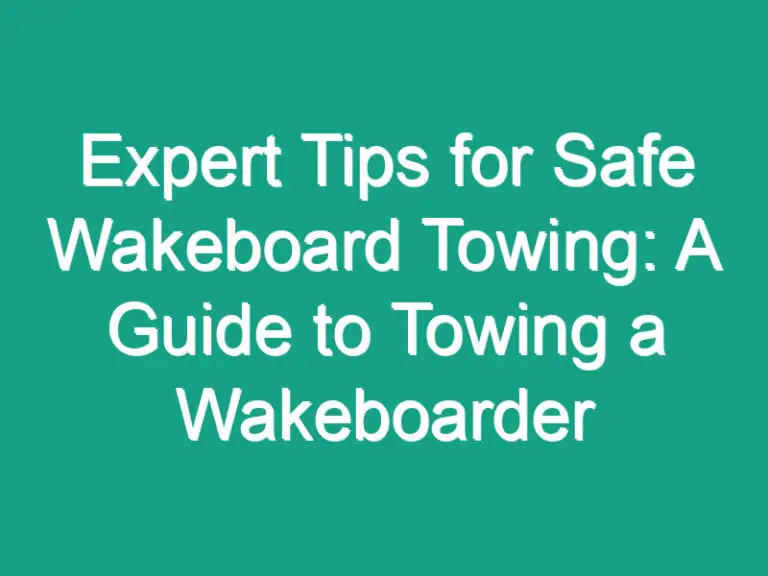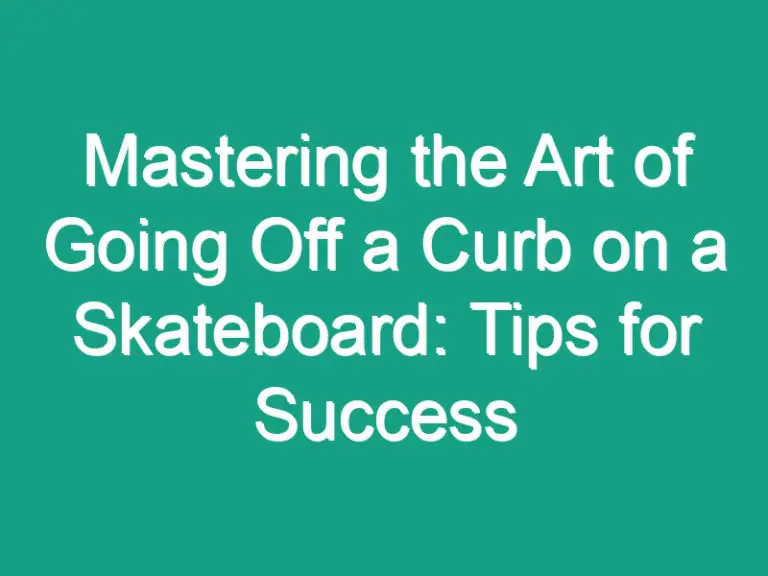
Riding a longboard is an exhilarating experience, but mastering the art of turning can take your skills to the next level. As someone who has spent countless hours perfecting my technique, I’m excited to share some valuable tips with you.
Learning how to turn a longboard effectively requires a combination of proper body positioning, weight distribution, and smooth carving techniques. In this article, I’ll break down the key steps to help you navigate those sharp corners and cruise with confidence.
Whether you’re a beginner looking to improve your skills or an experienced rider aiming to refine your turns, mastering the art of turning a longboard is essential for a seamless and enjoyable ride. Let’s dive in and elevate your longboarding game together.
Key Takeaways
- Turning on a longboard is crucial for control, maneuverability, safety, versatility, and fun.
- Proper body positioning involves bending knees, shifting weight, using arms for balance, focusing eyes on the turn, and staying centered.
- Effective weight distribution tips include front foot lean, back foot pressure, equal weight distribution, flexing knees, and smooth transitions.
- Mastering carving techniques involves initiating the turn, maintaining body position, controlling edges, focusing on fluid motion, and practicing consistently.
- Elevate your longboarding skills by mastering different types of turns, learning from others, pushing your limits, finding your style, staying consistent, investing in quality gear, prioritizing safety, and joining a longboarding community.
Importance of Turning on a Longboard
Mastering the art of turning on a longboard is crucial for enhancing your riding experience. Whether you’re cruising down the boardwalk or tackling winding paths, effective turning is essential for control and maneuverability. Here’s why turning on a longboard is so important:
- Control: Proper turning techniques allow you to navigate tight corners and crowded spaces with ease, giving you greater control over your board.
- Maneuverability: Sharp turns and smooth carves enable you to maneuver around obstacles and adjust your course quickly, enhancing your overall agility on the board.
- Safety: Being able to execute turns smoothly and confidently reduces the risk of accidents or collisions, keeping you safe while enjoying your ride.
- Versatility: Mastering various turning techniques opens up a world of possibilities for exploring different terrains and riding styles, adding versatility to your longboarding skills.
- Fun: Turning on a longboard isn’t just about practicality—it also adds an element of fun and excitement to your ride, making each journey more enjoyable and engaging.
By honing your turning skills and understanding the importance of proper technique, you can elevate your longboarding experience to new heights. Practice, patience, and a willingness to push your limits are key to becoming a confident and skilled longboard rider.
Proper Body Positioning for Efficient Turns
When it comes to executing smooth and efficient turns on a longboard, proper body positioning is essential. Here are some key tips that I’ve found incredibly helpful in mastering this aspect of longboarding:
- Keep your knees bent: This helps with maintaining balance and control while turning.
- Shift your weight: Lean into the direction of your turn by shifting your body weight towards the edge of the board.
- Use your arms: Extend your arms outwards to help with balance and stability during the turn.
- Look where you want to go: Keep your eyes focused on where you intend to turn, as this helps with steering in the right direction.
- Stay centered: Avoid leaning too far back or forward, as this can throw off your balance and make turning more challenging.
By practicing these body positioning techniques consistently, you’ll notice a significant improvement in your ability to execute turns smoothly on your longboard.
Weight Distribution Tips for Smooth Turning
When turning a longboard, proper weight distribution is crucial for achieving smooth and controlled maneuvers. Balancing weight between the front and back foot is key to initiating and completing a turn effectively. To optimize your longboarding experience, here are some essential weight distribution tips to keep in mind:
- Front Foot Lean: Leaning slightly on your front foot can assist in starting a turn smoothly. This action helps to shift the board’s center of gravity and initiates the direction change.
- Back Foot Pressure: Applying gentle pressure on the back foot helps you steer and control the turn’s arc. Adjusting pressure can dictate the tightness or wideness of the turn depending on the desired outcome.
- Equal Weight Distribution: Maintaining balance between both feet throughout the turn is crucial. Avoid putting too much weight on one foot to prevent instability and improve overall control.
- Flexing Knees: Bending your knees during a turn allows for better weight adjustment and absorption of any bumps or obstacles on the road. This flexibility enhances your stability and control.
- Smooth Transitions: Gradually shifting your weight from one foot to the other promotes fluid and seamless turns without jerky movements or loss of momentum. This technique ensures a more enjoyable and efficient longboarding experience.
By mastering these weight distribution tips, you’ll be able to execute smooth turns with confidence and precision, enhancing your overall longboarding skills and enjoyment.
Mastering Carving Techniques
When it comes to longboarding, Mastering Carving Techniques is essential for fluid and controlled turns. Carving involves making smooth S-shaped turns while maintaining speed and control. Here are some key points to keep in mind:
- Initiating the Turn: To start a carve, shift your weight to the front foot while engaging your toes to guide you towards the direction you want to turn.
- Body Position: Keep your body facing the direction you are turning and lean your shoulders slightly in that direction. This helps maintain balance and control throughout the turn.
- Edge Control: Focus on applying pressure to the edges of your longboard with your feet. Use your toes and heels to dictate the angle and sharpness of your turn.
- Fluid Motion: Carving is all about smooth and continuous movements. Avoid sudden jerky motions and aim for a seamless transition from one turn to the next.
- Practice and Patience: Mastering carving techniques takes time and practice. Be patient with yourself and keep honing your skills to improve your turns over time.
By dedicating time and effort to mastering carving techniques, you’ll be able to navigate turns with ease and grace, enhancing your overall longboarding experience.
Taking Your Longboarding Skills to the Next Level
Improving your longboarding skills is all about honing your techniques and pushing yourself to new heights. Here are some tips to elevate your longboarding game:
- Master Your Turns: Practice different types of turns such as carving, slides, and quick turns to enhance your maneuverability on the board.
- Learn from Others: Watch videos of experienced longboarders to pick up new tricks and techniques that can inspire your progression.
- Push Your Limits: Challenge yourself by trying more advanced moves and pushing the boundaries of what you think is possible on a longboard.
- Find Your Style: Experiment with various riding styles and stances to discover what feels most natural and comfortable for you.
- Stay Consistent: Dedicate regular practice sessions to hone your skills and maintain progress over time.
- Invest in Quality Gear: Upgrading your longboard equipment can make a significant difference in your performance and overall experience.
- Stay Safe: Prioritize safety by wearing appropriate gear such as helmets, knee pads, and gloves to prevent injuries while pushing your limits.
- Join a Longboarding Community: Connect with fellow longboarders to exchange tips, share experiences, and foster a supportive learning environment.
By incorporating these tips into your longboarding routine, you can take your skills to the next level and unlock new possibilities on your longboard adventure.
Conclusion
Mastering various longboarding skills is key to enhancing maneuverability and overall experience. By practicing different turns, learning from experienced riders, pushing personal limits, and experimenting with riding styles, you can elevate your skills and unlock new possibilities. Consistency in practice, investing in quality gear, prioritizing safety, and joining a longboarding community are essential steps to improving your performance. Remember, longboarding is not just a sport but a lifestyle that offers endless opportunities for growth and enjoyment. So, embrace the journey, challenge yourself, and ride on with confidence. Your longboarding adventure awaits!
Frequently Asked Questions
What types of longboarding skills should I focus on mastering?
Focus on mastering different types of turns, sliding techniques, foot braking, speed control, carving, and board handling skills to enhance your maneuverability and overall longboarding experience.
How can I improve my longboarding skills?
Improve your longboarding skills by practicing regularly, learning from experienced longboarders, pushing your limits, experimenting with different riding styles, using quality gear, prioritizing safety with protective equipment, and joining a longboarding community for support and learning.
What gear is essential for longboarding?
Essential gear for longboarding includes a quality longboard, helmet, knee pads, elbow pads, gloves, sturdy shoes, and suitable clothing for protection and comfort while riding.
Why is safety important in longboarding?
Safety is crucial in longboarding to prevent injuries and accidents. Wearing protective gear, following traffic rules, choosing safe riding locations, and practicing control and balance help ensure a safe longboarding experience.
How can I connect with other longboarders?
You can connect with other longboarders by joining local longboarding groups or communities, attending longboarding events or competitions, participating in group rides, and engaging with fellow longboarders on social media platforms or forums.

Hi, This is Roasalin, I have loved Skating since my early childhood days, and here I share my experiences and tips for beginners who want to turn into pro skaters. I hope you find it useful. you can contact me here






